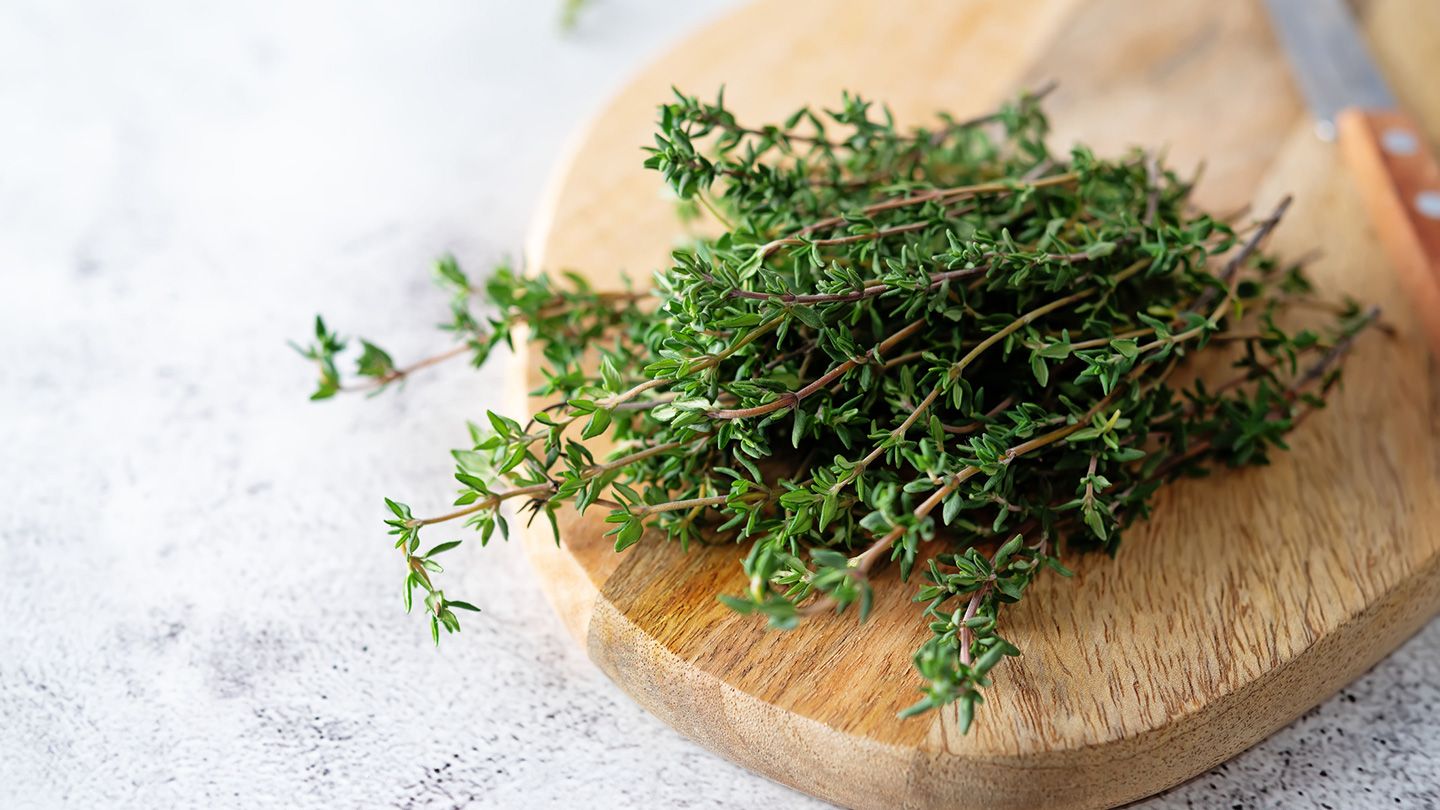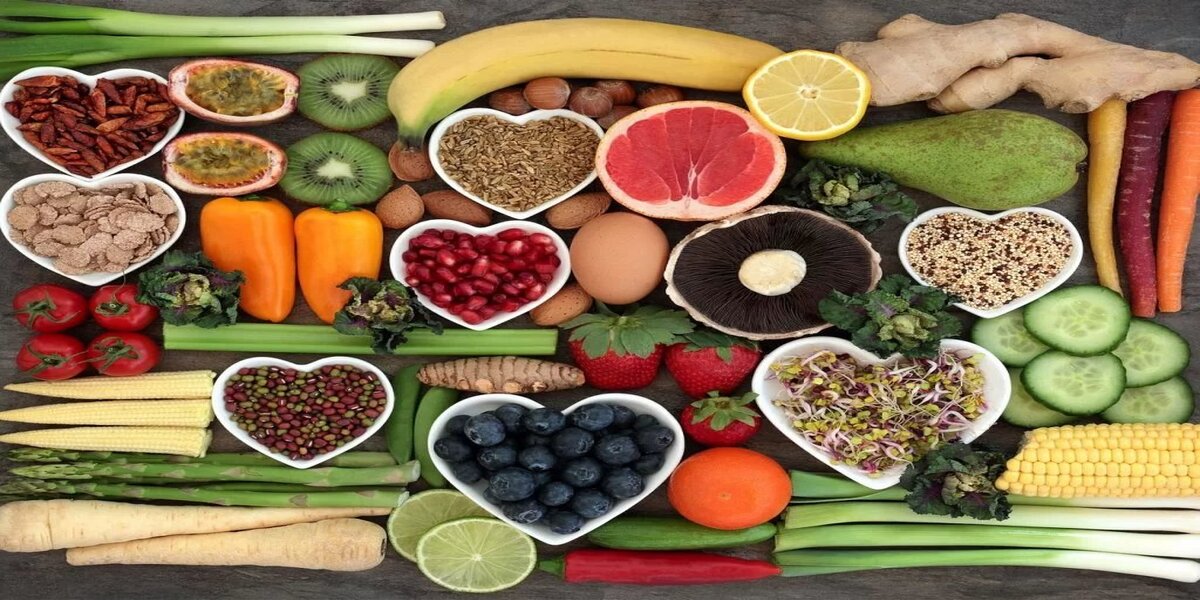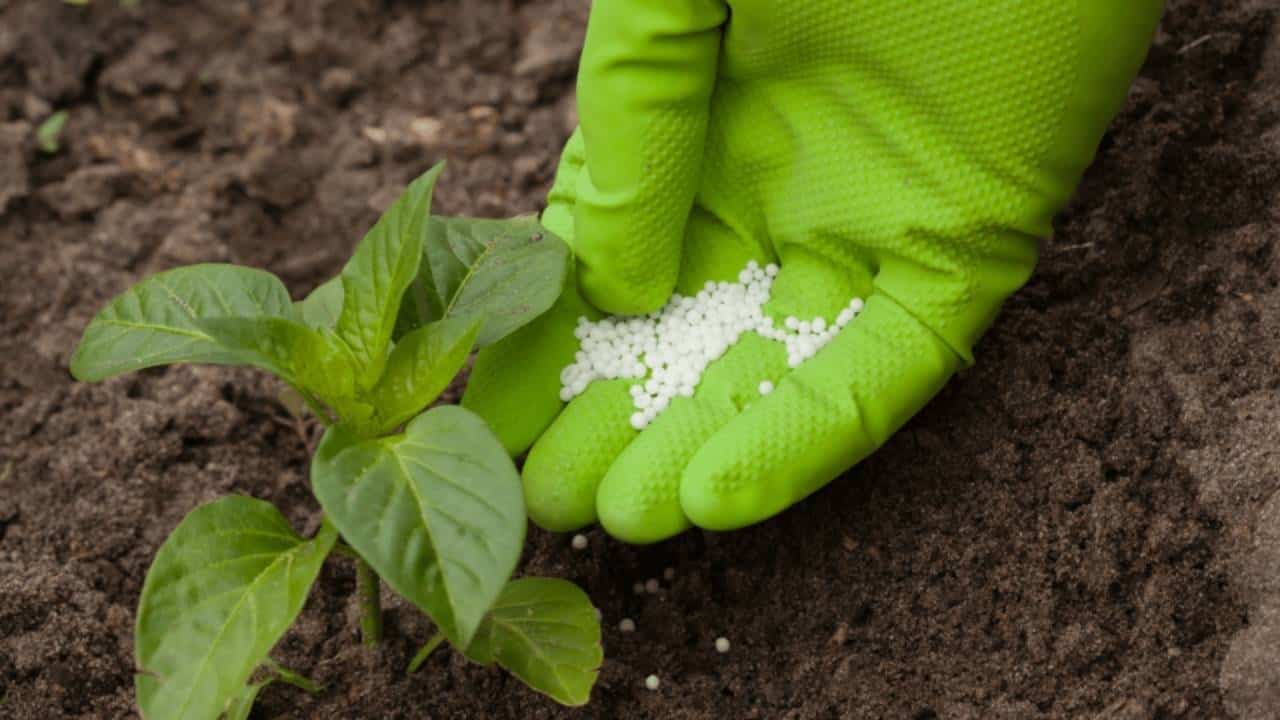Home>Gardening Basics>Understanding Soil>What Is Good Soil


Understanding Soil
What Is Good Soil
Published: February 10, 2024
Learn the basics of understanding soil and why it's crucial for gardening success. Discover what makes good soil and how to achieve it for thriving plants.
(Many of the links in this article redirect to a specific reviewed product. Your purchase of these products through affiliate links helps to generate commission for Chicagolandgardening.com, at no extra cost. Learn more)
Table of Contents
Introduction
When you think of a healthy garden or a thriving crop field, one of the most critical factors that comes to mind is good soil. But what exactly is good soil and why is it so important? In simple terms, good soil is a foundation for successful plant growth and development. It provides the necessary nutrients, proper drainage, and ideal pH levels for plants to thrive. Without good soil, plants may struggle to grow, yielding poor results and limiting agricultural productivity.
Good soil is not just essential for farmers and gardeners; it plays a vital role in the overall health of the environment. Proper soil management techniques can help prevent erosion, conserve water, and reduce the need for chemical fertilizers and pesticides.
In this article, we will explore the characteristics of good soil and its significance in promoting healthy plant growth. We will delve into the nutrient content, pH levels, drainage capabilities, organic matter, soil texture, and the role of soil microorganisms. Understanding these factors will empower you to optimize your soil and create an ideal environment for your plants to thrive.
Importance of Good Soil
Good soil serves as the foundation for successful plant growth, making it of utmost importance for farmers, gardeners, and anyone involved in cultivating plants. Here are some key reasons why good soil is vital:
- Optimal Nutrient Availability: Good soil is rich in essential nutrients like nitrogen, phosphorus, and potassium, which are vital for plant growth. These nutrients are required for crucial processes such as photosynthesis, root development, and fruit formation. Without a well-balanced nutrient supply, plants may experience stunted growth, nutrient deficiencies, and reduced yields.
- Proper Drainage and Water Retention: Good soil has the ideal balance of drainage and water-holding capacity. It allows excess water to drain away, preventing waterlogging and root rot. At the same time, it retains enough moisture for plants to access during dry periods. Proper drainage ensures that oxygen reaches the plant roots, promoting healthy root development and overall plant growth.
- Optimal Soil pH: Soil pH directly impacts nutrient availability to plants. Good soil maintains a neutral pH level, around 6 to 7, which allows for better nutrient absorption. Different plants thrive in different pH ranges, so it’s essential to understand the pH requirements of the crops or plants you’re growing. Adjusting soil pH can be done through the addition of organic matter or specific soil amendments.
- Enhanced Soil Fertility: Good soil contains an abundance of organic matter, which improves soil fertility. Organic matter provides a food source for beneficial microorganisms, enhances nutrient retention, and improves soil structure. Fertile soil promotes strong plant growth, increases resistance to diseases and pests, and contributes to higher yields.
- Prevention of Soil Erosion: Good soil with ample organic matter helps to prevent soil erosion. Strong root systems resulting from good soil structure hold the soil in place, preventing it from being washed away by heavy rainfall or windy conditions. Soil erosion can deplete valuable topsoil and lead to land degradation, impacting agricultural productivity.
Overall, good soil is crucial for plant growth, nutrient availability, water retention, and environmental sustainability. By recognizing the importance of good soil, farmers and gardeners can implement appropriate soil management practices to optimize plant health and maximize yields.
Characteristics of Good Soil
Good soil possesses several key characteristics that contribute to its ability to support healthy plant growth. Understanding these characteristics can help you assess the quality of your soil and take appropriate measures to improve its fertility and structure. Here are some important characteristics of good soil:
- Well-Drained: Good soil has proper drainage capabilities, allowing excess water to flow away while retaining enough moisture for plant roots to access. This ensures that the soil is not waterlogged, which can lead to root rot and hinder overall plant growth.
- Friable Structure: Good soil has a crumbly texture that is easy to work with. It is neither too sandy nor too compacted, allowing plant roots to penetrate the soil and access essential nutrients and water.
- Rich in Organic Matter: Good soil contains a significant amount of organic matter, such as decomposed plant material and animal manure. Organic matter improves soil fertility, enhances nutrient retention, and promotes the growth of beneficial microorganisms, aiding in nutrient cycling.
- Optimal Nutrient Content: Good soil is rich in essential nutrients required for plant growth, including nitrogen, phosphorus, and potassium. These nutrients are necessary for various plant functions, such as photosynthesis, root development, and flower and fruit production.
- Neutral pH: Good soil typically has a pH level in the neutral range, around 6 to 7. This allows for optimal nutrient availability to plants, as different nutrients are absorbed more efficiently within specific pH ranges. Adjusting the soil pH, if necessary, can be done through the addition of organic matter or specific soil amendments.
- Good Soil Structure: Good soil has a well-developed structure that provides a balance between space for air and water movement and the ability to hold nutrients. This allows for proper root development, aeration, and nutrient uptake by plants.
By assessing these characteristics in your soil, you can determine its quality and identify areas for improvement. If your soil lacks some of these characteristics, there are various soil management practices you can implement, such as adding organic matter, adjusting pH levels, and improving soil structure through proper tilling and cultivation methods.
Nutrient Content of Good Soil
One of the key factors that define good soil is its nutrient content. Good soil is rich in essential nutrients that are necessary for plant growth and development. Here are some of the important nutrients found in good soil:
- Nitrogen (N): Nitrogen is a vital nutrient for plants as it is a primary component of amino acids, proteins, and chlorophyll. It is responsible for promoting leafy growth and enhancing the overall health and vigor of plants.
- Phosphorus (P): Phosphorus plays a crucial role in energy transfer within plants, contributing to root development, flower formation, and seed production. Adequate phosphorus in the soil encourages strong root systems and promotes early plant establishment.
- Potassium (K): Potassium is involved in various physiological processes within plants, including water uptake and transportation, enzyme activation, and disease resistance. It helps maintain the overall health and vigor of plants and ensures proper fruit and seed development.
- Calcium (Ca): Calcium is essential for maintaining the structural integrity of plant cells. It promotes strong cell walls, enhances root development, and aids in nutrient uptake by plants.
- Magnesium (Mg): Magnesium is a central component of chlorophyll, the pigment responsible for photosynthesis. It plays a crucial role in energy production, helping convert sunlight into chemical energy and supporting overall plant growth.
- Sulfur (S): Sulfur is involved in several plant processes, including protein synthesis, enzyme activation, and the formation of certain vitamins and amino acids. It contributes to overall plant health and plays a role in pest and disease resistance.
- Trace Elements: Good soil also contains trace elements that are required in smaller quantities but are essential for plant growth, such as iron, copper, zinc, manganese, molybdenum, and boron. These trace elements are involved in various physiological and biochemical processes within plants.
The presence of these nutrients in good soil ensures that plants have access to all the necessary building blocks for their growth and development. However, it is important to note that the availability of these nutrients may vary depending on the soil type and pH. Conducting regular soil tests can help you understand the nutrient content of your soil and allow you to make informed decisions about fertilization and soil amendments.
By maintaining a well-balanced nutrient content in your soil, you can provide optimal conditions for plant growth, promote healthy development, and maximize yields.
Soil pH and Good Soil
Soil pH is a crucial factor that determines the acidity or alkalinity of the soil. It plays a significant role in the availability of essential nutrients to plants and their overall health and growth. Good soil typically has a pH level that falls within the optimal range for the specific plants being cultivated. Here’s why soil pH is important for maintaining good soil:
Optimal Nutrient Availability:
The pH of the soil directly affects the availability of essential nutrients to plants. Different nutrients are most accessible to plants within specific pH ranges. For example, nitrogen, phosphorus, and potassium are more readily available in slightly acidic to neutral soil (pH 6-7). By maintaining the appropriate pH level, you ensure that these essential nutrients are readily accessible to plants, promoting healthy growth and development.
Effect on Soil Microorganisms:
Soil pH also influences the activity of beneficial soil microorganisms. These microorganisms play a vital role in nutrient cycling, decomposition of organic matter, and enhancing the overall fertility of the soil. Certain microorganisms thrive in specific pH ranges. Maintaining the optimal pH level creates a favorable environment for the growth and activity of these beneficial microorganisms, further improving soil fertility.
Preventing Nutrient Imbalances:
Extremes in soil pH can lead to nutrient imbalances. Acidic soils (low pH) can result in the leaching of essential nutrients like calcium, magnesium, and potassium, making them less available to plants. Conversely, alkaline soils (high pH) can cause the immobilization of certain nutrients, preventing them from being absorbed by plants. Good soil with the proper pH level helps prevent these nutrient imbalances, ensuring that plants have access to the required nutrients for optimal growth.
Plant-Specific Requirements:
Different plants have different pH preferences. Some plants prefer slightly acidic soil, while others thrive in slightly alkaline conditions. Understanding the pH preferences of the plants you are cultivating allows you to make appropriate adjustments to the soil pH to create an optimal growing environment.
To determine the pH of your soil, you can perform a soil pH test using a pH meter or a soil testing kit. If the pH level is not within the desired range for your plants, you can adjust it by adding organic matter, such as compost or peat moss, to increase acidity, or by adding lime to decrease acidity for more alkaline soil.
By maintaining the proper soil pH, you create a favorable environment for nutrient availability, beneficial soil microorganisms, and optimal plant growth, contributing to good soil quality and successful plant cultivation.
Soil Drainage and Good Soil
Soil drainage is a critical characteristic of good soil that directly impacts the health and growth of plants. Proper soil drainage ensures the efficient movement of water through the soil profile, allowing for the optimal balance of moisture and oxygen around plant roots. Here’s why soil drainage is important for maintaining good soil:
Prevents Waterlogging:
Good soil drainage prevents water from accumulating and becoming stagnant around plant roots. Excessive water can drown the roots and deprive them of oxygen, leading to root rot and the eventual death of plants. By maintaining proper soil drainage, you provide plants with the necessary oxygen supply and prevent waterlogging, promoting healthy root development and overall plant growth.
Allows for Nutrient Uptake:
Optimal soil drainage facilitates the movement of water containing dissolved nutrients to the root zone. Plant roots absorb nutrients through the water surrounding them. If the soil is poorly drained, water movement is restricted, leading to limited nutrient availability for plants. Good soil drainage ensures that nutrients can reach the root zone, enabling plants to take up the essential elements necessary for healthy growth.
Reduces Soil Erosion:
Soil with proper drainage is less prone to erosion caused by heavy rainfall or water runoff. Well-drained soil allows water to infiltrate the soil profile rather than running off the surface. This helps prevent the loss of topsoil and essential nutrients, maintaining soil fertility and preventing land degradation.
Promotes Beneficial Soil Microorganisms:
Adequate soil drainage creates an environment that supports the growth and activity of beneficial soil microorganisms. These microorganisms play a vital role in breaking down organic matter, cycling nutrients, and improving soil structure. Good soil drainage ensures that there is enough oxygen in the soil, allowing these microorganisms to thrive and contribute to the overall health and fertility of the soil.
Allows for Root Penetration:
Proper soil drainage promotes the development of a well-structured soil with loose particles. This allows plant roots to penetrate the soil easily, establishing a strong root system. Strong roots enable plants to access water and nutrients more efficiently, supporting their growth, and anchoring them securely in the ground.
If your soil has poor drainage, you can improve it by incorporating organic matter, such as compost or well-rotted manure, into the soil. This helps improve soil structure, allowing for better water movement and aeration. Additionally, creating raised beds or installing drainage systems can also aid in improving soil drainage for specific areas.
By ensuring proper soil drainage, you create an environment that promotes healthy root development, nutrient uptake, and the overall well-being of your plants, contributing to the quality and productivity of the soil.
Organic Matter in Good Soil
Organic matter is a key component of good soil and plays a crucial role in maintaining soil fertility and overall soil health. Organic matter consists of decomposed plant and animal material, including leaves, crop residues, compost, and manure. Here’s why organic matter is important for maintaining good soil:
Enhances Soil Fertility:
Organic matter is a rich source of essential nutrients, such as nitrogen, phosphorus, and potassium, as well as micronutrients. As organic matter decomposes, these nutrients are gradually released into the soil, providing a continuous supply of nutrients to plants. This enhances soil fertility and promotes healthy plant growth.
Improves Soil Structure:
Organic matter improves soil structure by binding soil particles together and creating aggregates. This results in a soil that is more friable and well-drained, allowing for better root penetration and water movement. Improved soil structure also creates spaces for air circulation and supports the activity of beneficial soil organisms.
Increases Water Holding Capacity:
Organic matter acts as a sponge, absorbing and holding moisture in the soil. This increases the water-holding capacity of the soil, especially important during dry periods. Organic matter helps prevent water runoff and increases the availability of water to plant roots, preventing drought stress and promoting optimal plant growth.
Enhances Nutrient Retention:
Organic matter has high cation exchange capacity (CEC), which means it has the ability to hold and release nutrients to plants. This improves nutrient retention in the soil, preventing nutrient leaching and making nutrients more readily available for plant uptake. Organic matter also helps buffer the pH of the soil, making nutrients more accessible to plants within the desired pH range.
Supports Beneficial Soil Organisms:
Organic matter provides a food source and habitat for beneficial soil microorganisms, such as bacteria, fungi, and earthworms. These microorganisms help break down organic matter further, releasing nutrients and improving soil structure. They also contribute to disease suppression, nutrient cycling, and overall soil health.
To increase organic matter in your soil, you can add compost, cover crops, or well-rotted manure. These organic amendments not only provide nutrients but also contribute to the long-term improvement of soil fertility and structure.
Incorporating organic matter into your soil enhances its fertility, structure, water holding capacity, and nutrient retention. It supports the activity of beneficial soil organisms and promotes long-term soil health, ensuring that you have good soil for optimal plant growth and sustainable agriculture.
Soil Texture and Good Soil
Soil texture refers to the proportion of sand, silt, and clay particles in the soil. It is an essential characteristic of good soil that influences its fertility, drainage, and overall suitability for plant growth. Here’s why soil texture is important for maintaining good soil:
Achieving the Right Balance:
Good soil typically has a balanced soil texture, with a mixture of sand, silt, and clay particles. Each particle size has unique properties that contribute to soil structure and function. Sand particles are larger and have good drainage but hold fewer nutrients. Silt particles are intermediate in size and provide good drainage and nutrient-holding capacity. Clay particles are the smallest and hold the most water and nutrients but may have poor drainage. Having a mix of these particle sizes helps maintain the right balance of water-holding capacity, drainage, and nutrient availability.
Drainage and Moisture Retention:
Soil texture directly affects drainage and moisture retention. Sandy soils have larger particles, which allow water to drain quickly, making them well-suited for crops that prefer drier conditions. On the other hand, clay soils have smaller particles that retain water but may drain poorly, leading to waterlogging. Soils with intermediate texture, such as loam or silt, strike a balance between drainage and water retention, offering an ideal growing medium for a wide range of plants.
Root Penetration and Air Circulation:
Soil texture also influences root penetration and air circulation in the soil. Sandy soils with larger particles offer less resistance to root growth, allowing plants to establish a robust root system. These soils also provide good aeration, allowing oxygen to reach plant roots. Clay soils with smaller particles can be compacted easily, restricting root penetration and leading to poor aeration. Soils with a balanced texture provide a favorable environment for root development and adequate air circulation.
Nutrient Availability:
Soil texture affects nutrient availability to plants. Sandy soils, with their larger particles and low nutrient-holding capacity, may require more frequent fertilization to meet plant nutrient requirements. Clay soils, with their smaller particles and high nutrient-holding capacity, may retain nutrients but may become compacted, limiting root access. Soils with a loamy or well-balanced texture offer better nutrient availability due to their ability to retain nutrients while allowing for good soil drainage and aeration.
Amending soil texture can be challenging, as it is largely determined by the inherent characteristics of the soil. However, it is possible to improve soil texture through the addition of organic matter. Adding compost or well-rotted manure can help improve soil structure and increase the water-holding capacity of sandy soil. For clay soils, organic matter can help loosen compacted particles and improve drainage.
By understanding the importance of soil texture, you can assess and manage your soil effectively, ensuring good soil condition for healthy plant growth and optimal agricultural productivity.
Soil Microorganisms and Good Soil
Soil microorganisms are an integral part of good soil and play a vital role in maintaining soil health and fertility. These microscopic organisms, including bacteria, fungi, protozoa, and nematodes, contribute to nutrient cycling, decomposition of organic matter, disease suppression, and the overall balance of the soil ecosystem. Here’s why soil microorganisms are important for maintaining good soil:
Nutrient Cycling:
Soil microorganisms are responsible for breaking down organic matter in the soil, releasing essential nutrients that are then made available to plants. They decompose organic material such as leaves, crop residues, and animal manure, converting complex organic compounds into simpler forms that can be readily absorbed by plant roots. This nutrient cycling helps maintain soil fertility and provides a continuous supply of nutrients for plant growth.
Improving Soil Structure:
Soil microorganisms contribute to the formation and maintenance of good soil structure. They produce substances that act as a glue, binding soil particles together and creating aggregates. These aggregates improve soil porosity, allowing for better water infiltration, root penetration, and air circulation. The presence of microorganisms promotes soil aggregation and stability, preventing erosion and maintaining soil structure over time.
Enhancing Nutrient Availability:
Microorganisms play a crucial role in the transformation and availability of nutrients in the soil. They convert organic and inorganic forms of nutrients into plant-available forms through processes such as nitrogen fixation, nitrification, and mineralization. These transformations ensure that plants have access to the necessary nutrients in a form they can easily uptake.
Disease Suppression:
Some soil microorganisms contribute to disease suppression by competing with pathogenic organisms, producing antimicrobial compounds, or inducing systemic resistance in plants. The presence of beneficial microorganisms helps maintain a balanced soil ecosystem, reducing the incidence and severity of soil-borne diseases and promoting the overall health of plants.
Enhancing Soil Resilience:
Soil microorganisms contribute to the overall resilience of the soil ecosystem. They play a crucial role in maintaining soil health and stability, even in challenging environmental conditions. Soil microorganisms help break down pollutants, detoxify contaminants, and maintain nutrient cycling processes, ensuring the long-term sustainability and productivity of the soil.
By promoting the presence and activity of beneficial soil microorganisms, you can enhance soil fertility, improve nutrient availability to plants, and maintain a healthy and resilient soil ecosystem. Practices such as adding organic matter, minimizing tillage, practicing crop rotation, and avoiding excessive use of agrochemicals can help create a favorable environment for beneficial soil microorganisms.
Understanding the importance of soil microorganisms and their role in maintaining good soil is essential for sustainable agriculture and the long-term productivity of crops and plants.
Conclusion
Good soil is the foundation for successful plant growth and plays a crucial role in agriculture, gardening, and environmental sustainability. It provides essential nutrients, proper drainage, optimal pH levels, and a conducive environment for beneficial soil microorganisms. Understanding the characteristics of good soil, such as its texture, organic matter content, and nutrient availability, empowers farmers, gardeners, and land managers to optimize soil conditions and promote healthy plant growth.
By maintaining a well-balanced nutrient content and pH level in the soil, you ensure optimal nutrient availability to plants, supporting their growth and development. Good soil drainage prevents waterlogging and promotes proper root development, while adequate soil organic matter enhances soil fertility and structure, improving nutrient retention and supporting beneficial soil microorganisms.
Soil texture influences the drainage, water-holding capacity, and nutrient availability of the soil. Understanding the balance between sand, silt, and clay particles helps create an ideal soil environment for plant root penetration, water movement, and nutrient uptake.
Lastly, recognizing the vital role of soil microorganisms in nutrient cycling, disease suppression, and overall soil health is crucial. Promoting the presence and activity of beneficial microorganisms ensures the long-term resilience and productivity of the soil ecosystem.
In conclusion, investing in good soil management practices and understanding the intricate relationships between soil characteristics and plant growth is essential for sustainable agriculture, improved crop yields, and environmental stewardship. By prioritizing the health and quality of our soil, we can create bountiful gardens, productive farmlands, and a healthier planet for generations to come.










